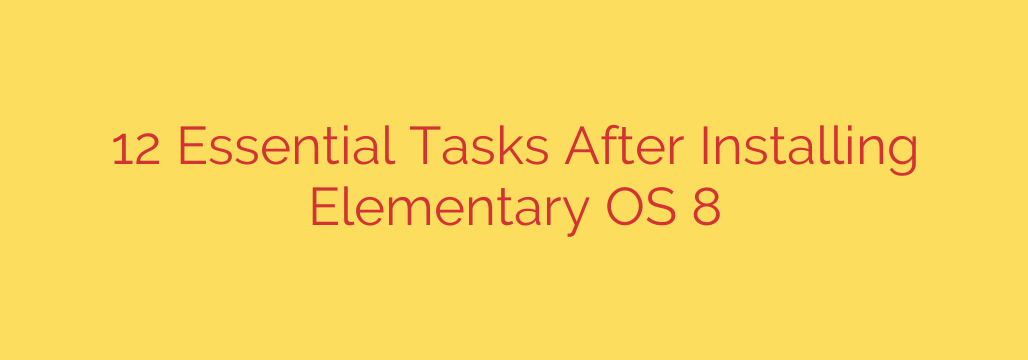
Getting your new Elementary OS 8 installation perfectly set up is key to a smooth and productive computing experience. After the initial installation is complete, there are several crucial steps you should take to customize your environment, ensure security, and install the applications you need. Performing these post-installation tasks will help you unlock the full potential of your system and tailor it precisely to your workflow.
Here are some essential actions to take right after installing Elementary OS 8:
First and foremost, you should update your system. This ensures you have the latest security patches, bug fixes, and software versions. Open the AppCenter and check for updates or use the terminal.
Next, consider installing restricted extras. These often include multimedia codecs and other proprietary software necessary for playing various audio and video formats out of the box.
You’ll likely want to install your preferred applications. While Elementary OS includes core apps, you might need web browsers like Firefox or Chrome, an office suite like LibreOffice, or a different media player. The AppCenter is your primary source, but you can also use Flatpak.
Explore the AppCenter thoroughly. It’s curated specifically for Elementary OS and is the recommended way to install applications, offering sandboxing benefits.
Consider setting up Flatpak if it’s not already fully configured or if you plan to install many applications not found in the default AppCenter. This gives you access to a vast software library.
Take time to customize your desktop appearance. Adjust themes, icons, and the dock position to make your workspace feel more personal and comfortable.
Review and configure your system settings, particularly privacy and security options. Adjust location services, diagnostic reporting, and other settings according to your preferences.
Manage your startup applications. Disable any programs that you don’t need running every time you boot up to improve performance.
Install necessary drivers, especially for graphics cards or Wi-Fi adapters, to ensure optimal hardware performance and stability. Elementary OS often handles this well, but it’s worth checking.
Set up a backup solution. Protecting your data is vital. Configure a backup tool to automatically save your important files to an external drive or cloud storage.
Learn and utilize keyboard shortcuts. Elementary OS has many helpful shortcuts that can significantly speed up your workflow. Familiarize yourself with them to navigate more efficiently.
Finally, clean up unnecessary files. After installations and updates, temporary files can accumulate. Periodically cleaning your system helps reclaim disk space and maintain performance.
By performing these tasks, you transform a fresh installation into a robust and personalized computing platform ready for your daily tasks. Taking these steps early ensures a smoother, more secure, and more efficient experience with Elementary OS 8.
Source: https://www.linuxtechi.com/things-after-installing-elementary-os/








